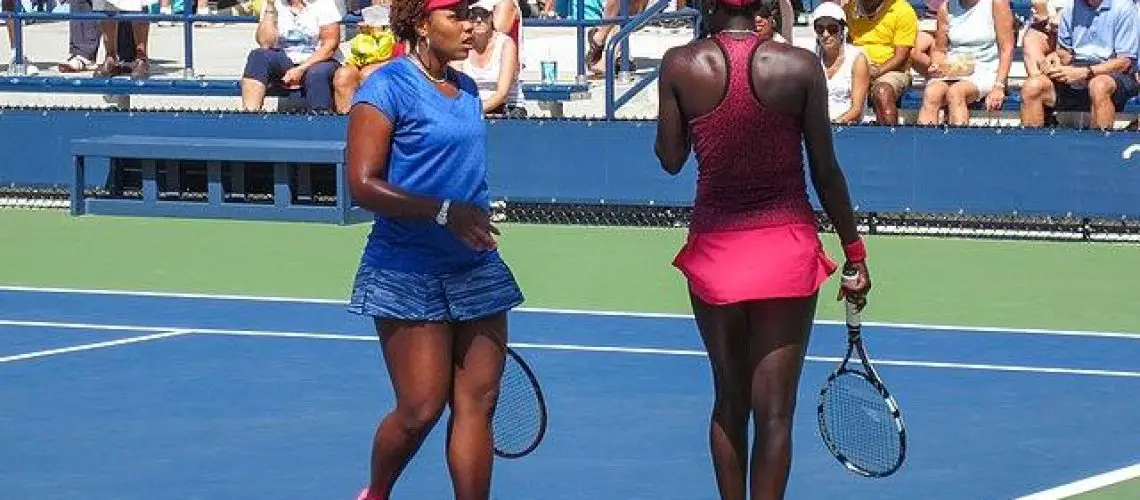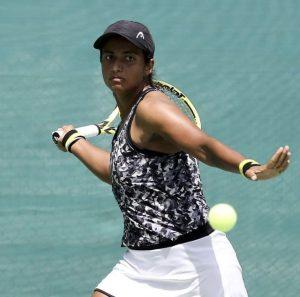We may earn money or products from the companies mentioned in this post.
Introduction

Tennis, a sport of precision and skill, is governed by a set of rules and regulations that ensure fair play and maintain the integrity of the game Understanding these rules is crucial for players, coaches, and spectators alike It allows players to compete within the boundaries of the sport, coaches to guide their athletes effectively, and spectators to fully appreciate the strategic battles on the court
A Brief Overview of Tennis Rules and Regulations
Tennis is played between two opponents or teams across a net on a rectangular court The objective is to hit the ball over the net into the opponent’s side in a way that they cannot return it successfully
The rules cover various aspects such as scoring, equipment specifications, court dimensions, player conduct, and more These rules have evolved over time to make tennis an engaging and challenging sport for players at all levels
The Importance of Understanding Tennis Rules
For players, having a solid understanding of tennis rules allows them to compete within the boundaries set by the governing bodies It ensures fair play and helps avoid penalties or disqualification due to rule violations
Coaches play a vital role in guiding their players during training sessions and matches Familiarity with tennis rules enables coaches to provide accurate advice and strategies that comply with tournament regulations
Spectators also benefit from understanding tennis rules as it enhances their enjoyment of watching matches Knowing how points are scored, what constitutes a foul or violation adds depth to their appreciation of the game
Definition of Coaching Violation in Tennis
In tennis, coaching refers to guidance provided by an authorized coach during a match or practice session A coaching violation occurs when there is unauthorized communication between player and coach during official matches
The Role of a Coach in Tennis
A coach in tennis plays a crucial role in the development and success of a player They provide technical, tactical, physical, and mental support to help players reach their full potential Coaches analyze opponents, devise strategies, and offer feedback to improve performance
Distinction Between On-Court Coaching and Off-Court Coaching
In certain tournaments or events, on-court coaching is allowed during specified moments such as changeovers or set breaks This allows coaches to communicate with their players and provide guidance during the match
Off-court coaching refers to guidance given by coaches outside of official matches This can include training sessions, practice matches, video analysis, fitness training, and mental preparation Off-court coaching does not involve direct communication during an ongoing match
Types of Coaching Violations in Tennis

Tennis is a sport that requires focus, skill, and fair play Players are expected to rely on their own abilities and make split-second decisions during matches However, there are instances where coaching violations occur, which can disrupt the integrity of the game Let’s explore the different types of coaching violations in tennis
On-court coaching violations
1 Unauthorized communication between player and coach during a match:
- a) Verbal instructions or advice from the coach to the player:
- b) Hand signals or gestures used to communicate with the player:
Coaches play a crucial role in guiding players during matches, but it’s essential that all communication occurs within the rules Offering verbal instructions or advice from the sidelines can provide an unfair advantage to one player over another
In some cases, coaches may resort to non-verbal means of communication, such as hand signals or gestures, to convey messages to their players While these methods may seem discreet, they still fall under unauthorized communication and can lead to penalties
2 Entering the court without permission during a match:
- a) Coach entering to provide assistance or advice to their player:
In certain situations, coaches may feel compelled to physically enter the court area in order to offer immediate assistance or advice to their players However, this act is considered a violation as it goes against the established boundaries of fair play
Off-court coaching violations
1 Improper conduct by coaches outside the court area:
- a) Influencing line calls or decisions made by officials:
- b) Disruptive behavior affecting play:
Coaches hold a significant influence over their players, and sometimes they may attempt to use that influence to sway line calls or decisions made by officials This behavior is not only unsportsmanlike but also undermines the integrity of the game
Coaches are expected to conduct themselves in a respectful manner, both on and off the court Any disruptive behavior that interferes with the flow of the game or distracts players can lead to penalties and tarnish the overall experience for everyone involved
In conclusion, coaching violations in tennis encompass unauthorized communication between player and coach during matches, as well as improper conduct by coaches outside the court area These violations compromise fair play and can have a negative impact on the outcome of a match It is essential for coaches, players, and officials to uphold the principles of sportsmanship and abide by the rules set forth in order to ensure a level playing field for all competitors
Consequences of Coaching Violations in Tennis

In the fast-paced world of tennis, coaching violations can have serious consequences for both players and coaches These violations occur when a coach provides guidance or advice to a player during a match, which is strictly prohibited by the rules Let’s take a closer look at the penalties that players and coaches may face when caught violating these rules
Penalties for Players
When it comes to coaching violations, players are subjected to a point penalty system that aims to deter them from seeking outside help during matches This system operates on escalating penalties based on the number of offenses committed
-
Warning for First Offense:
In most cases, players receive a warning for their first offense This serves as a reminder of the rule and gives them an opportunity to rectify their behavior -
Point Penalty for Second Offense:
If a player persists in seeking coaching assistance after receiving a warning, they will incur a point penalty This means that their opponent will be awarded one point in addition to any points they may have earned through regular gameplay -
Game Penalty for Subsequent Offenses:
Should a player continue to violate the coaching rules beyond the second offense, they face even harsher consequences in the form of game penalties This means that their opponent will be awarded an entire game as punishment for the repeated infractions
Penalties for Coaches
The consequences of coaching violations don’t stop with players; coaches also bear responsibility for their actions during matches When caught providing unauthorized guidance or advice, coaches can expect disciplinary measures that aim to discourage such behavior
-
Removing Coaches from their Position during the Match:
In more severe cases, officials may decide to remove the coach from their position on the sidelines for the duration of the match This not only serves as a punishment but also prevents any further rule-breaking by the coach -
Fines Imposed on Coaches based on Severity:
Additionally, coaches may face financial penalties based on the severity of their coaching violation The amount of these fines can vary depending on factors such as the impact of the violation and any previous offenses committed
In conclusion, coaching violations in tennis have significant consequences for both players and coaches alike The point penalty system ensures that players face increasing penalties for repeated infractions, while coaches may be removed from their position or fined accordingly These measures aim to maintain fairness and uphold the integrity of competitive tennis matches
Prevention and Management of Coaching Violations

Educating about rules and regulations
In order to prevent coaching violations in sports, it is crucial to provide education about the rules and regulations governing the game Regular workshops should be organized for players, coaches, and teams to ensure that they are well-informed about the dos and don’ts on the field By equipping individuals with a comprehensive understanding of the rules, we can minimize the occurrence of coaching violations
Raising awareness among spectators is also essential in preventing coaching violations Spectators play a significant role in creating an environment conducive to fair play By educating them about what constitutes a coaching violation, we can foster a culture of respect for the game where everyone understands their responsibilities
Effective monitoring by officials
To manage coaching violations effectively, it is imperative to have well-trained umpires who can ensure fair play on the field Umpires should possess a deep knowledge of the rules and regulations and be vigilant in identifying any instances of coaching violations Their expertise will enable them to make accurate judgments and maintain fairness throughout the game
In addition to trained umpires, implementing technology when needed can enhance monitoring efforts Technologies such as video replays or instant feedback systems allow officials to review incidents more accurately This not only helps in identifying coaching violations but also serves as evidence when addressing such issues after games
Player-coach relationship
A strong player-coach relationship built on trust and mutual respect can significantly reduce coaching violations Coaches must clearly communicate their expectations while ensuring that players understand their roles and responsibilities within the team dynamics When there is open communication between coaches and players, potential conflicts can be addressed proactively, minimizing any temptations for rule-breaking
Similarly, players need to recognize the authority and expertise of their coaches By trusting their coach’s guidance and following instructions, players can contribute to a positive team environment where coaching violations are less likely to occur
These strategies for preventing and managing coaching violations in sports provide a comprehensive approach that emphasizes education, effective monitoring, and fostering strong player-coach relationships By implementing these measures, we can ensure fair play and uphold the integrity of the game
Useful Links

Tennis Players Can Now Be Coached From the Stands in …
About that no-coaching rule in Grand Slam tennis
Why is coaching not permitted in tennis?
Off-Court Coaching Trial Announced For Second Half Of …
The Case for Courtside Coaching at Grand Slams
NCAA recruiting violations occurred in Boise State men’s …
US Open Allows Coaching From Stands For First Time
Has in-game coaching changed tennis at the US Open?
Bublik calls on ATP to clarify coaching rules after receiving …
Why Is Coaching Not Allowed In Tennis?
Tennis coaches can’t coach during a match?
Tsitsipas says off-court coaching will end unfair violations
On-court coaching to be allowed at Aussie Open
TIMELY: Boise State men’s tennis facing probations and …
Code of Conduct
What Is Code Violation In Tennis?
What Is A Code Violation In Tennis?
Causing a Racquet | The New Coaching Rule on the ATP …
TENNIS COACHES MANUAL 2 0 2 2






